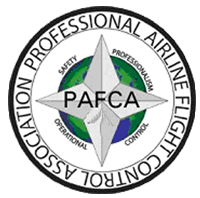Dispatch… do you work in the tower?
The Dispatcher, while employed by the airline, is charged by the FAA to ensure each commercial flight is planned and operated safely in accordance with Federal Aviation Regulations.
FAR 121.601 Aircraft dispatcher information to pilot in command: Domestic and flag operations:
(a) The aircraft dispatcher shall provide the pilot in command all available current reports or information on airport conditions and irregularities of navigation facilities that may affect the safety of the flight.
(b) Before beginning a flight, the aircraft dispatcher shall provide the pilot in command with all available weather reports and forecasts of weather phenomena that may affect the safety of flight, including adverse weather phenomena, such as clear air turbulence, thunderstorms, and low altitude wind shear, for each route to be flown and each airport to be used.
(c) During a flight, the aircraft dispatcher shall provide the pilot in command any additional available information of meteorological conditions (including adverse weather phenomena, such as clear air turbulence, thunderstorms, and low altitude wind shear), and irregularities of facilities and services that may affect the safety of the flight.
Preflight analysis begins for each flight approximately two hours before scheduled departure. At this time, a flight release is generated for review by the Pilot in Command and a flight plan sent to the appropriate ATC facilities. After review and in some cases a personal briefing, the Pilot in Command will authorize flight by signing the Dispatch release. From this point forward the Dispatcher will monitor weather and airport conditions along the planned route of flight considering any information that would require changes or amendments to the original operating plan. This information is then conveyed to the Pilot.
Dispatch Resources:
Operating an airline with more than 450 aircraft requires a certain level of planning and coordination. Some would consider Airline Operations Control a form of organized chaos; there are many days when this is true. To be effective, the Dispatcher relies heavily on a number of different sources of support and information from various departments and outside agencies. It could be said that Dispatch is a clearing house of sorts for all relevant information pertaining to flight operations. Some of those with whom we rely upon most are; Pilots, Air Traffic Coordinators and Controllers, Dispatch Services personnel, System Aircraft Maintenance Control, Operations Planning, Station Control and Load Planning to name but a few. In addition, the Dispatcher must have adequate knowledge of; aircraft systems and performance, meteorology, air traffic operations and security.
Communication between the Dispatcher and Pilot during flight is essential to a safe mission and is required at all times. This is accomplished in different ways depending on the type and area of operation. Throughout the contiguous United States, ground based VHF communications are conducted via voice and/or data link to onboard aircraft computer systems. International and Extended Over-water operations require the use of Satellite based technology to supplement where ground based services are not available. On occasion HF communications are utilized with varying degrees of quality depending on the location of the aircraft as well as atmospheric conditions. Whatever the method, positive two-way communication between the Dispatcher and the flights he/she is responsible for is required at all times.
PAFCA-UAL Dispatchers take great pride in the service we provide to our Pilots and customers. It is a pleasure and honor to serve in this exciting profession.
